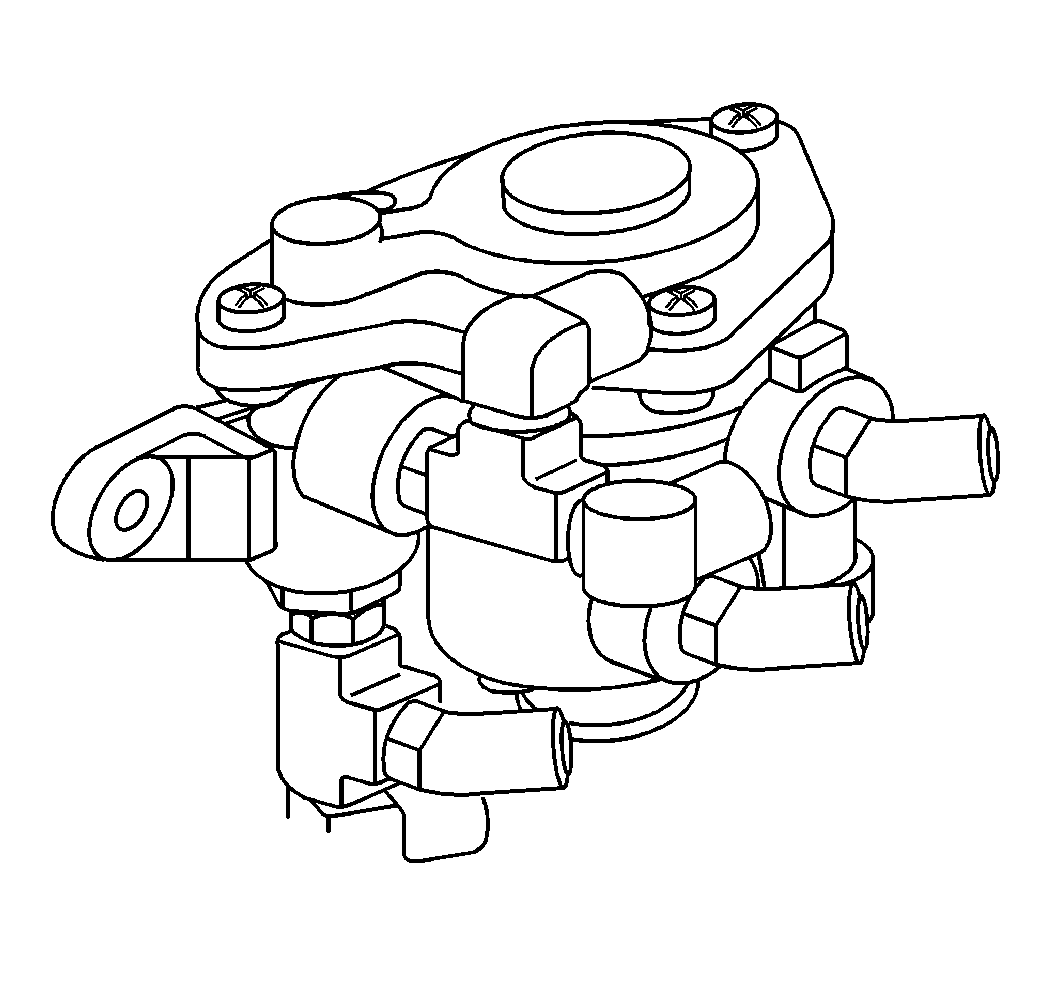For 1990-2009 cars only
Chassis Mounted Park Control Valve Operational Check Operational Check
- Block the wheels.
- Start the engine.
- Charge the system to the air compressor governor cut-out point.
- Stop the engine.
- Pull out the park control knob.
- Verify that the spring brake chamber assemblies apply promptly.
- Install an accurate test air pressure gauge in the delivery port air line.
- Push in the park control knob.
- Verify that the spring brake chamber assemblies release fully.
- Verify that the test gauge pressure reading is approximately 379 kPa (55 psi) or more. This is the rated spring hold-off pressure.
- Pull out the park control knob.
- Verify that the test gauge reading promptly falls to zero. If the reading does not fall to zero, overhaul or replace the park control valve (chassis mounted).
- Push in the park control knob.
- Drain the air from the rear service air reservoir(s).
- Ask an assistant to apply and release the brake pedal repeatedly.
- Verify that the pressure reading decreases each time your assistant applys the brake pedal.
- Remove the test air pressure gauge from the delivery port air line.
- Start the engine.
- Charge the system to the air compressor governor cut-out point.
- Stop the engine.
- Check the brakes for proper operation.
- Remove the wheel blocks.

If the pressure reading is not correct, overhaul or replace the park control valve (chassis mounted).
After several applications of the brakes, the pressure on the gauge will drop to the point where release of the spring brake chamber assemblies will no longer occur.
Chassis Mounted Park Control Valve Operational Check Leakage Test
- Block the wheels.
- Start the engine.
- Charge the system to the air compressor governor cut-out point.
- Stop the engine.
- Push in the park control knob.
- Inspect the exhaust port and around the valve cover for air leakage. Slight air leakage is permitted.
- Remove the wheel blocks.
If air leakage is excessive, overhaul or replace the park control valve (chassis mounted).
